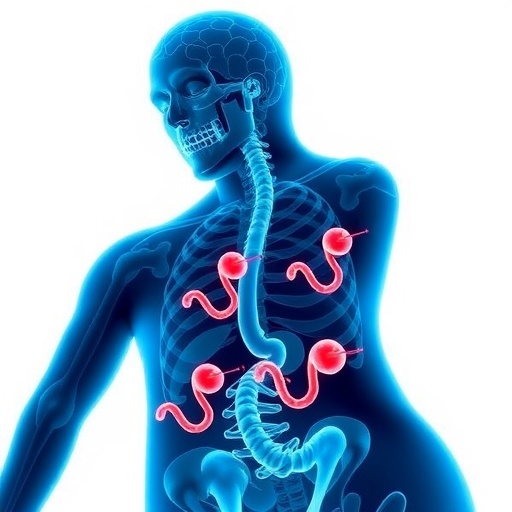Credit: Jashnsaz et al./Biophysical Journal 2017
A bacterial species that hunts other bacteria has attracted great interest as a potential living antibiotic, but exactly how this predator tracks down its prey has not been clear. A study published March 28 in Biophysical Journal sheds light on this question, revealing that the bacterial predator Bdellovibrio bacteriovorus (BV) homes in on its target by taking advantage of fluid forces generated by its own swimming movements and those of its prey. These hydrodynamic flow fields bring the bacteria in close proximity, giving BV a greater chance of successful attack.
"Despite having been discovered over 50 years ago, very little is known about how the bacterial predator BV locates its bacterial prey," says co-senior study author Steve Pressé of Arizona State University. "Understanding how BV finds its prey is a first step in engineering this bacterium to serve as a living antibiotic–that is, have it hunt prey inside a living organism."
Similar to a virus, BV attacks bacteria such as Escherichia coli (E. coli) by attaching to and entering its prey, growing and replicating within the cell, and then suddenly bursting out, releasing its progeny into the surrounding environment. Given BV's effectiveness at killing pathogens and safety in animal models, some have proposed using the bacterial predator to purify water, degrade biofilms on surfaces, and serve as a living antibiotic in livestock or in humans. Understanding how BV actually finds its prey is an important first step toward these goals, but until now, whether BV uses chemical cues to specifically target bacterial cells or bumps into them at random was not known.
To address this question, Pressé and co-senior study author Gregory Anderson of Indiana University-Purdue University Indianapolis tracked the movements of BV and E. coli using high-resolution video microscopy. They observed that BV swam rapidly in the solution, violently perturbing its liquid environment. To investigate the effects of these hydrodynamic flows, the researchers next monitored the bacteria as they swam parallel to flat surfaces, in this case, the microscope slide and coverslip. Under these circumstances, BV's own movements generated whirlpool-like fluid forces that trapped the bacteria, compelling them to swim in circles next to the surfaces.
Additional experiments showed that BV preferred to swim near walls and around beads rather than in open waters, suggesting that fluid forces captured them in these hydrodynamic orbits. Moreover, experimental controls, calculations, and computational modeling confirmed that hydrodynamic forces, rather than chemical or electrical cues, were responsible for these effects. Because both BV and E. coli were subject to their own self-generated fluid forces, both bacterial species co-localized to surfaces, making it much easier for BV to subsequently collide at random with its prey.
"Prior to our study, the scientific community concluded that BV most probably bumps into its prey at random. But I found it very hard to believe that after more than one billion years of evolution, the best nature could come up with was a totally random search by the predator for the prey," Pressé says. "Ironically, our findings show that the search by BV for prey is random. It's just not random in three dimensions!"
The next steps are to engineer BV to make them more susceptible to their own self-generated flow fields, and then watch these super-efficient hunters in action in a living host. "In the end, our findings can lead to the use of bacterial predators as tools for reducing or eliminating harmful bacteria," Anderson says. "This could have environmental, agricultural, industrial, and health impacts. In particular, they could lead to the development of better therapies for overcoming the increasingly difficult issue of antibiotic resistance."
###
The authors acknowledge funding from the National Science Foundation, the National Institutes of Health, and a Graduate Student Imaging Research Fellowship from the IUPUI Office of the Vice Chancellor for Research.
Biophysical Journal, Jashnsaz et al.: "Hydrodynamic Hunters" http://www.cell.com/biophysj/fulltext/S0006-3495(17)30218-7
The Biophysical Journal (@BiophysJ), published by Cell Press for the Biophysical Society, is a bimonthly journal that publishes original articles, letters, and reviews on the most important developments in modern biophysics-a broad and rapidly advancing field encompassing the study of biological structures and focusing on mechanisms at the molecular, cellular, and systems levels through the concepts and methods of physics, chemistry, mathematics, engineering, and computational science. Visit: http://www.cell.com/biophysj/home. To receive Cell Press media alerts, contact [email protected].
Media Contact
Joseph Caputo
[email protected]
617-397-2802
@CellPressNews
http://www.cellpress.com
############
Story Source: Materials provided by Scienmag




